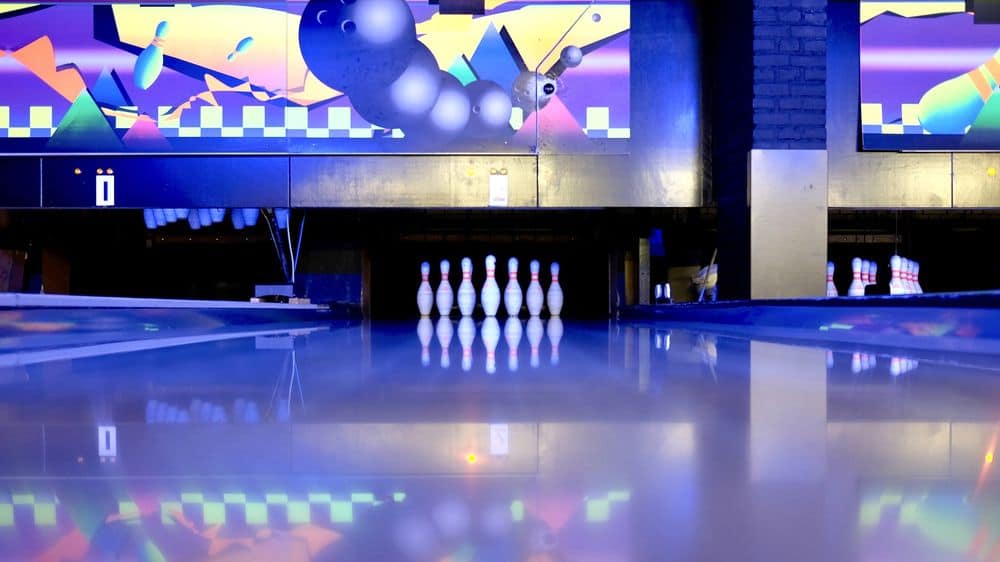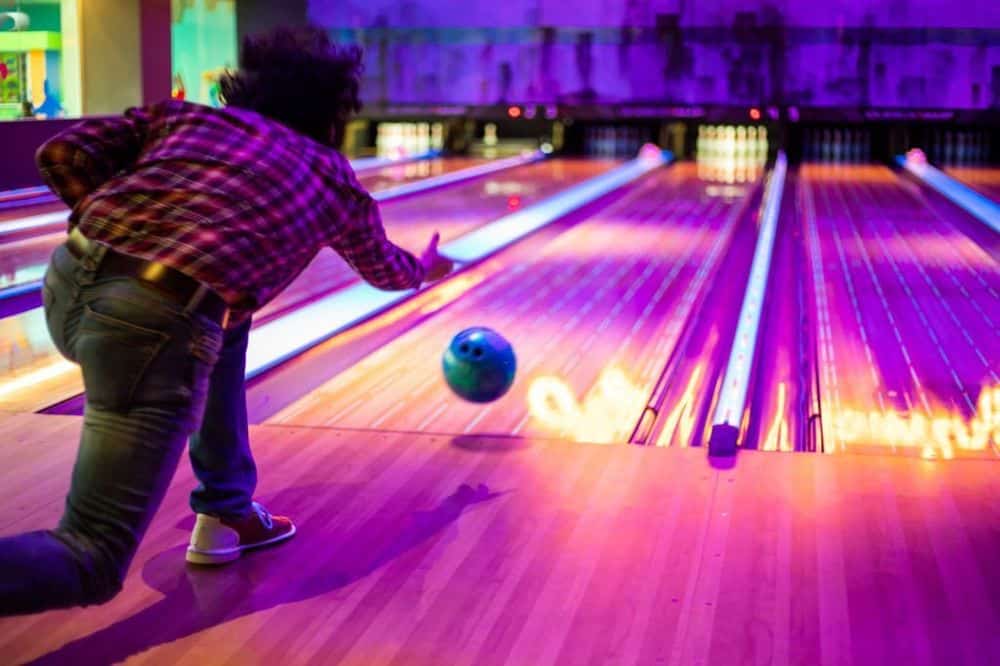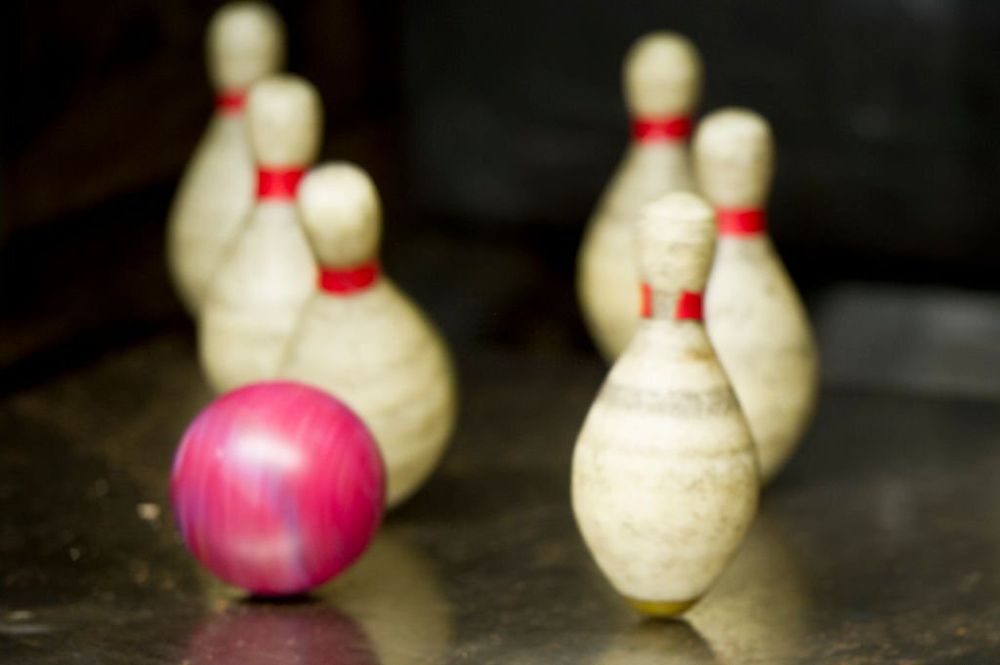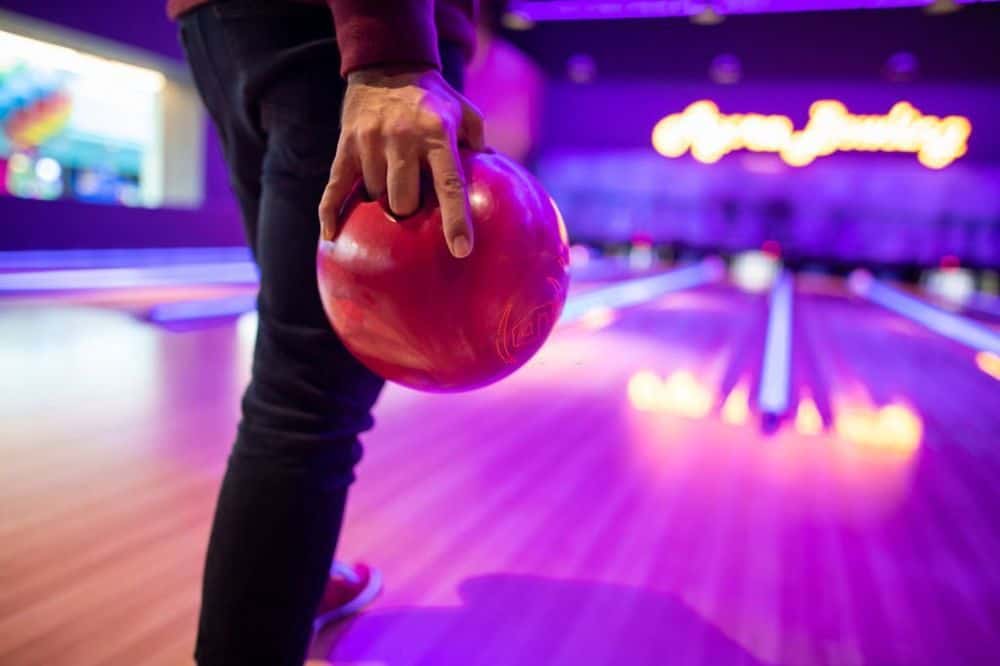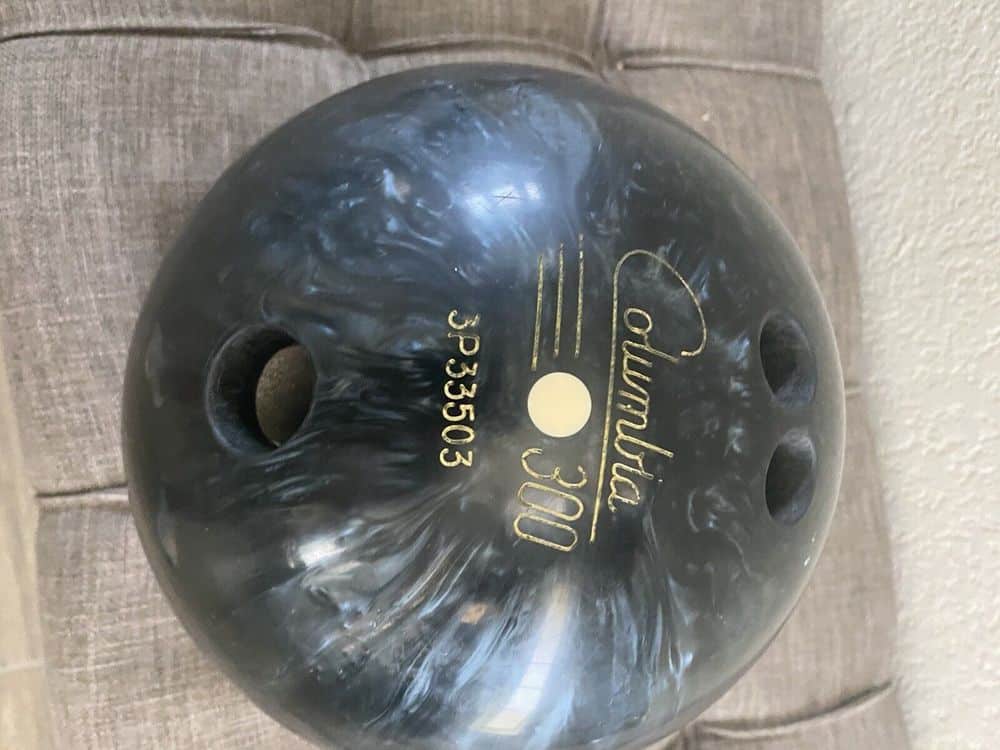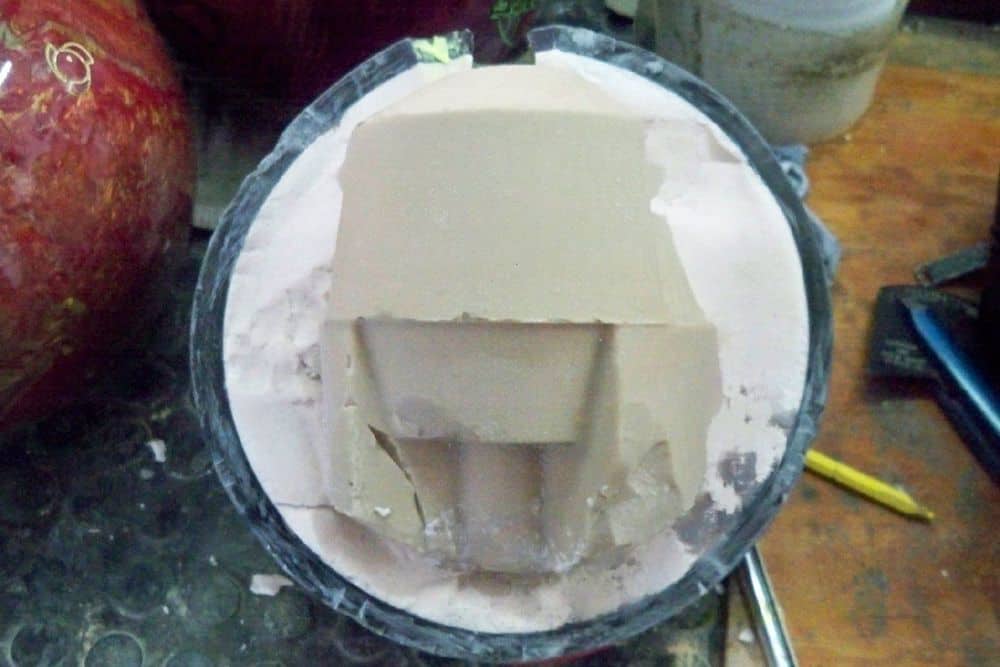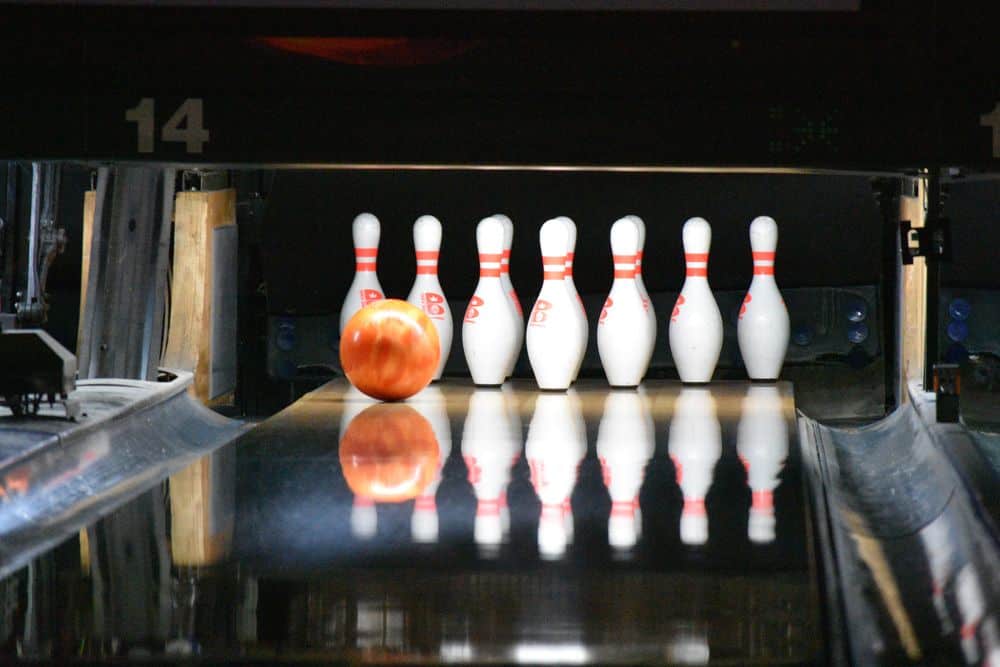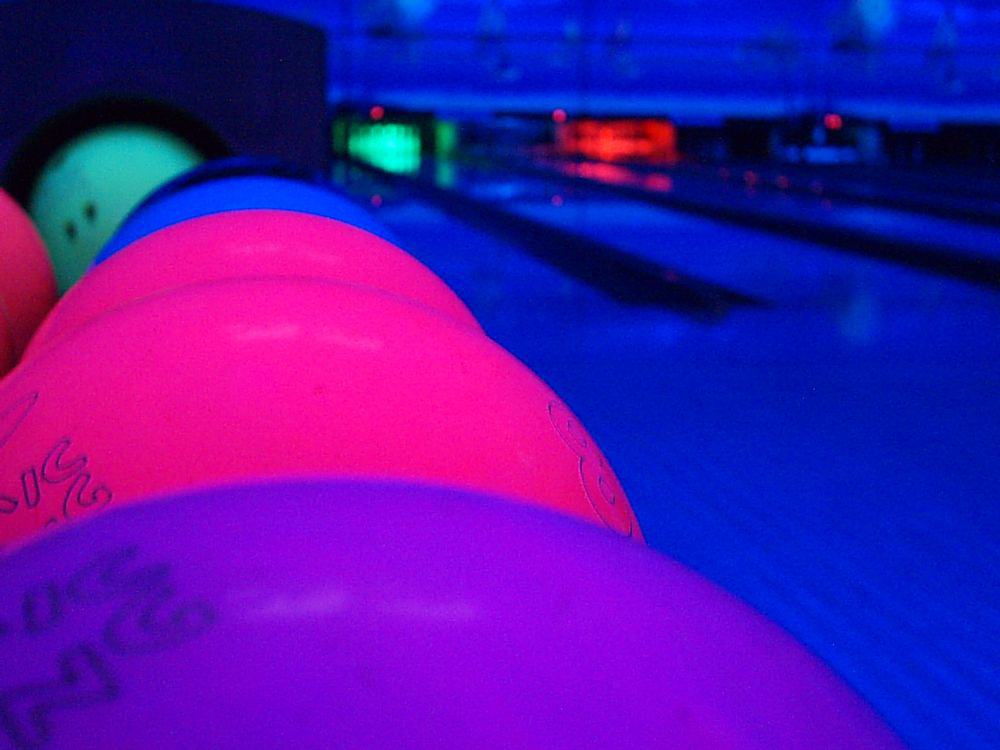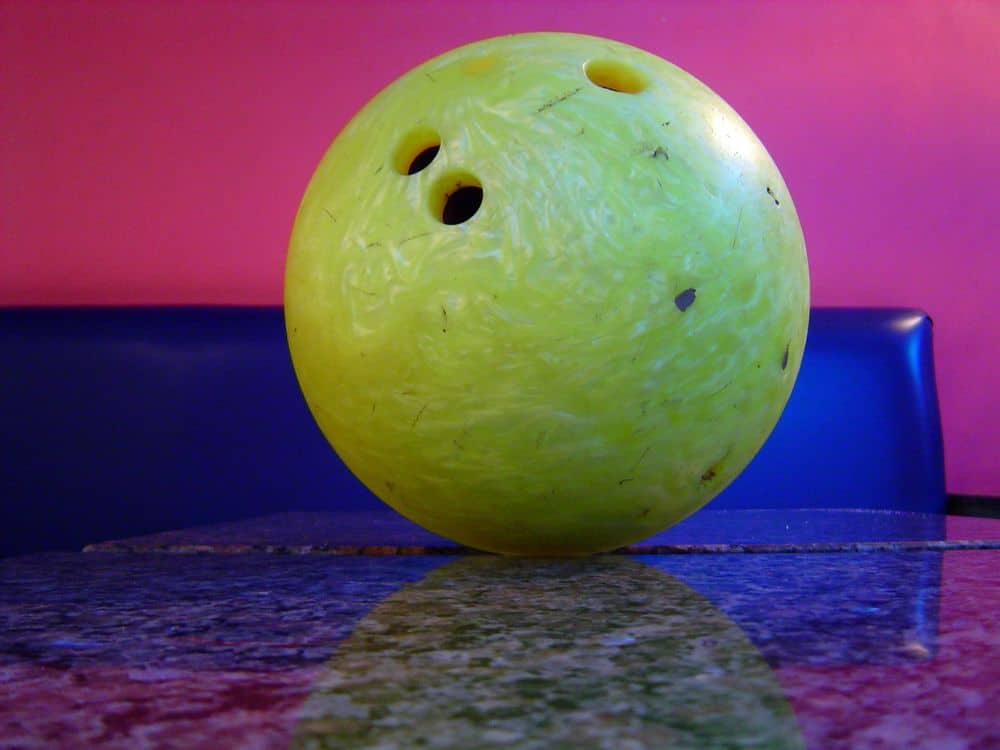Bowling alleys are the hardest on flooring in commercial settings.
A typical 16-pound bowling ball rolls down the lanes every time someone plays.
Some bowling balls even bounce a few times before making their way toward the pins.
Most bowling alley flooring always seems to be in excellent condition.
Bowling alleys take a beating, so what flooring is typically installed there?
What flooring material is used in bowling alleys?
The three primary materials used to construct bowling lanes are Maple Wood, Pine Wood, and Synthetic.
Possibly, some lanes will only use two of these materials, or even just one.
Traditionalists prefer bowling lanes constructed of pine and maple wood. However, to reduce costs, most contemporary bowling alleys have synthetic floors.
Here’s more on the various flooring types.
Pine Flooring
Pine floors dominate bowling alleys. This wood is used in the center lane, where there is less foot traffic and bowling ball abuse.
Pine does not quickly shrink and is decay-resistant. It is also robust and is suitable for increasing ball-lane interaction.
Maple Flooring
As it is resistant to shock, maple flooring is also utilized in bowling alleys. This wood is dense and long-lasting so that it can tolerate frequent refinishing.
Most bowling alley floors made of maple are constructed with a tongue-and-groove design and are nailed or glued together.
The maple floorboards are placed in high-traffic and high-abuse areas of the floor.
This wood is resilient and can be finished and sanded multiple times.
Synthetic Flooring
Wood deteriorates over time, increasing maintenance costs. Synthetic lanes are currently more common in bowling alley flooring.
This flooring is more lasting and easier to maintain.
The synthetic flooring provides bowlers with a textured surface that allows for easy sliding and will require less lane oil dressing.
This low-maintenance flooring always appears brand-new, saving owners money on upkeep.
What type of wood is used to construct a bowling alley?
Typically, bowling lanes are constructed from pine or maple. Most bowling alleys combine them for the most significant cost savings.
How is the bowling alley coated?
The real reason for lubricating the bowling alley with oil is that it protects the wood and acts as a cushion when the bowling ball strikes the wood.
The second major factor is aesthetics. Since the heydays, bowling alleys have conjured images of gleaming lanes and bright-white pins.
The oil contributes to the slick appearance of these lanes. Without the shine, it will appear dull and level.
How do you cut a wooden bowling alley?
The maple section contains case-hardened screw nails, while the pine section typically does not. Some lanes are sprayed first from the face side with epoxy.
If you wish to reduce the length, obtain a metal detector and locate a straight line across the lane.
Use wedges to pry the boards apart at the precise joint if you wish to reduce their widths. Look for 12″-apart rows of plugged holes.
What are synthetic lanes made of?
Synthetic flooring combines organic and synthetic materials to create sheets, planks, and tiles.
Vinyl, laminate, linoleum, plastic, foam, and rubber flooring materials are all synthetic.
Compared to hardwood, synthetic flooring is typically versatile, long-lasting, and incredibly low-maintenance.
How is bowling alley wood so strong?
Bowling alley flooring is constructed from a blend of woods that can withstand the impact of bowling balls.
You can find various combinations of wood throughout the lanes.
Where impact and use are more intense, harder wood is used, whereas softer wood is utilized where impact is less intense.
How are bowling lanes constructed?
A regular bowling lane, including the flat gutters, kickbacks, and approach, must always be constructed from wood and other synthetic materials thoroughly examined and approved for usage by the United States Bowling Congress (USBC).
How often do bowling lanes get replaced?
Wooden paths eventually deteriorate. Every year or two, they must be sanded down based on the amount of use.
The technology for lane sanding has improved to the point where they no longer need to remove as much of the lane to make it smooth again.
After sanding the lanes, it is advisable to apply several layers of urethane before the lane conditioner.
In addition, wood lane housing typically receives a second layer of urethane after approximately six months.
Why do bowling alleys oil their lanes?
Apart from protecting the surface of wood, the oil improves a bowler’s performance.
A bowling ball would not move as efficiently on the lane if the surface had not been oiled.
The friction would eventually become excessive and stop its momentum.
There is a high probability that most balls would not even reach the pins.
Why do bowling alleys have the same appearance?
Most bowling lanes are constructed from maple and pine. These are the most common types of wood used for bowling lanes, so you are likely to find both in your lane.
To save money, however, most modern bowling alleys have synthetic floors. It’s also possible that you’ve encountered synthetic flooring made to resemble maple and pine.
Why are bowling lanes made of diverse colors of wood?
When bowling for the first time, you may realize your lane has a unique color scheme. Dark and light woods are mixed.
You see both lighter and darker wood in a lane because you are observing two distinct types of wood.
Mable and pine are the most common types of wood used for bowling lanes, so you are likely to encounter both in your lane.
Pine is lighter in color than maple. Pine planks can be distinguished by their lighter hue. The same applies to maple.
Conclusion
The quality of the bowling lane determines the scoring and overall bowling experience.
All lanes must be durable to avoid repair downtime.
Because these lanes need constant lubrication to withstand heavy ball friction, the flooring used affects their durability.
16-pound balls are dropped from 5 feet onto these lanes daily. Lanes endure severe abuse and must be durable.

